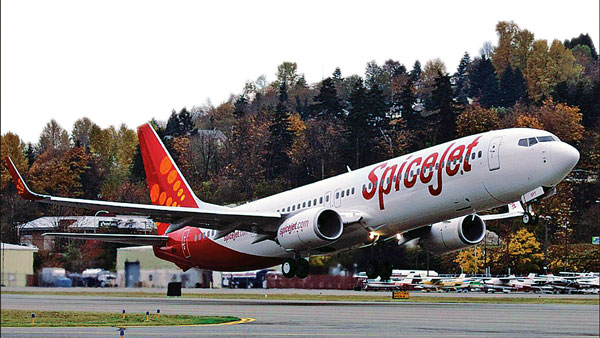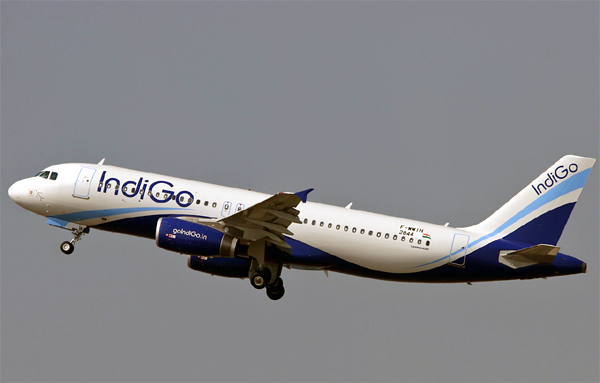|
This optimism stems from the fact that the Indian
economy is likely to bounce back to its growth
levels of over 8 per cent (as witnessed in 2010-11)
from its present levels of below 5 per cent growth
rate. Air transportation is a key enabler of economic
growth and the powers that be are recognising
this fact, albeit belatedly, and are working towards
creating an eco-system. Importantly, the passenger
numbers touted are impressive at 180 million by
2020 and this projection alone calls for huge
investments in airlines, airports and other allied
activities.
AIRLINES NEED FINANCIAL
INFUSION
Of the 11 scheduled operators (including cargo
– Blue Dart and Deccan Cargo), majority of
them are strapped by huge financial debt and the
overall debt (of all airlines) is estimated at
over Rs 53,000 crore. Vijay Mallya’s Kingfisher
Airlines (which had swallowed India’s first
low cost carrier Air Deccan) has bitten the dust,
while India’s national carrier Air India
needs infusion of government funds on a regular
basis and Jet Airways is getting foreign equity
(from Etihad Airways) to bail it out from the
financial mess. One of the reasons for the airlines
struggling is the high price of aviation turbine
fuel (ATF) which has been eroding their bottom
lines. ATF accounts for nearly 40 per cent of
the operational costs of an airline and there
are no signs of ATF prices being brought down
to reasonable levels, commensurate with international
standards.
Notwithstanding this scary scenario, there are
a couple of entrants, including established corporate
giants, knocking on the door, wanting to get into
airline business. Tata Group has tied up with
two international players – Malaysia’s
Air Asia and Singapore Airlines, to start two
separate airlines, the former in the low cost
segment and the latter as a full service carrier.
The first foray into the regional aviation sector
has been made by an unknown entity in the field
of aviation. Real estate LEPL group from Vijayawada
which launched Air Costa in 2013 has already announced
its expansion plans, having ordered 50 Embraer
E-Jets at the recently concluded Singapore Air
Show. Ramesh Lingamaneni, Executive Director of
LEPL Group and Chairman of Air Costa, the aviation
vertical of the Group, states “Regional air
services have enormous potential in India, especially
the ones connecting tier one, two and three cities.
Our initial experience with our current E-Jets
has been very positive. Our passengers have complimented
the aircraft on its comfort and point-to-point
convenience. The E2s will give us right-sized
seat capacity for us to cater to the future target
markets and unit costs that are competitive with
larger re-engined single aisle aircraft.”
The massive aircraft orders of IndiGo and GoAir,
about two years ago, surprised industry watchers,
particularly when the others were going through
a turbulent phase. They remain on the expansion
course firmly.
BOOMING PASSENGER AND
CARGO GROWTH ANTICIPATED
New entrants and existing airlines are hooked
on to the forecasts of passenger and cargo growth
figures. In the last two decades, the fastest
growth in overall air traffic in India was witnessed
during 2004-05 to 2010-11 at the rate of 16.5
per cent with domestic traffic clocking a compounded
annual growth rate (CAGR) of 18.5 per cent and
International traffic at 14 per cent. In 2013
(from April to December), over 126 million passengers
(92 million domestic) flew on Indian and other
carriers.
The International Air Transport Association’s
(IATA) has forecast that India’s domestic
air travel market would be among the top five
globally, experiencing the second highest growth
rate.

MASSIVE AIRPLANE ORDERS
The passenger and cargo forecasts being such,
obviously there is humongous demand for highly
fuel efficient aircraft. Boeing has predicted
that demand for commercial jets in India will
increase more than 4.5 times of the world market
by 2031. "India is projected to have highest
passenger traffic growth in the world. It will
need 1,450 new planes through 2031 worth a total
of up to $175 billion", states Dinesh A Keskar,
Senior Vice President (Sales, Asia-Pacific and
India), Boeing.
LCC DOMINATES
When Captain Gopinath started India’s truly
first low cost carrier (LCC) – Air Deccan
– it was the beginning of a revolution in
the air transportation industry. Air Deccan attracted
first time air travellers and it gathered momentum,
making the low concept a viable business model
(that subsequently Air Deccan merged with Kingfisher
Airlines is a different story). IndiGo, GoAir,
and Spicejet followed suit.
In 2003-2004, the LCC market-share was about
1 per cent and presently it exceeds 70 per cent
of the total domestic traffic. Boeing’s forecast
is tied to this trend and the US aerospace major
believes that narrow-body aircraft will dominate
the domestic market.
Along with LCCs, there is another market that
is waiting to be tapped – the regional aviation.
The government has announced several incentives
to this segment to promote remote area connectivity.
There are as many as 15 applications before the
government to start regional airlines, an indicator
of the growth potential of smaller towns.

AIR CARGO YET TO WEIGH
IN
Air cargo sector is not given due importance
by the governments and also the aviation industry.
India’s ranking in ‘Logistics Performance
Indicator’ (LPI) has gone down to 47 from
39 in 2007. In comparison to India, China’s
2010 LPI rank was 27 and Brazil was ranked at
41.
In 2013 (April to December), the total air-cargo
volume handled by all Indian airports was 1,702,000
metric tonnes, woefully far behind than that of
individual performance of airports like Hong Kong
(3,976,768 metric tonnes), Memphis (3,916,410),
Shanghai (3,085,268), Incheon (2,539,221), Anchorage
(2,543,155) and Paris (2,300,063). The Ministry
of Civil Aviation has forecast that the total
cargo throughput at Indian airports is expected
to grow 7.6 times in the next 20 years (CAGR of
11.2 per cent). The Government of India’s
goal is to double exports from $225 billion to
$450 billion by 2014.
PAN-INDIA AIRPORT DEVELOPMENT
The Airports Authority of India (AAI) controls
125 airports in the country of which 84 are operational.
In addition to these, there are six joint venture
(JV) airports under the public private partnership
(PPP) framework and these are: Mumbai, Delhi,
Hyderabad, Bangalore, Nagpur and Cochin airports.
These airports are state-of-the art, the latest
being the terminal at Mumbai which is on par with
some of the best international airports in the
world.
In 2012, scheduled domestic airlines operated
more than 11,500 departures per week connecting
77 airports. Aircraft movements are expected to
double by the next decade. The turning point in
airport development came when the government operationalised
the PPP model at New Delhi, Mumbai, Bangalore,
Hyderabad and Kochi and these airports are world
class. The AAI has embarked upon upgradation and
modernisation of airport infrastructure at other
airports to including 35 non-metro airports in
the country. As per CAPA, India will need about
$40 billion of investment in airport projects
by 2025.
GENERAL AVIATION OPENING
UP STEADILY
According to the Directorate General of Civil
Aviation (DGCA), there are 124 operators with
365 aircraft (business jets, helicopters, turboprops,
etc) and this segment is set to grow fast as the
number of high net-worth individuals is expanding.
With general elections to be held this year, there
is going to be huge demand for general aviation
aircraft and it is hoped that the segment capitalises
on this short term gain. The General Aviation
market in India is expected to grow at 10 per
cent per annum to cross Rs 16 billion by 2017
with operators acquiring about 300 business jets,
300 small aircraft and 250 helicopters though
there are several issues which is holding the
segment from growing.
As per the report by the Working Group of the
12th Five Year Plan, a total investment of over
Rs 20,000 crore ($3.34 billion) in general aviation
is expected during the Plan period. The helicopter
market in India is equally promising, with growing
requirements in tourism, mining, corporate travel,
air ambulance, homeland security, etc.
NASCENT MRO SEGMENT
Both scheduled and non-scheduled operators mostly
rely on overseas locations such as Dubai or Singapore
for their maintenance, repair and overhaul (MRO)
requirements. Though there are some who have entered
this business in joint ventures, the requirement
is huge. India’s MRO segment is estimated
to grow at 10 per cent and reach $2.6 billion
by 2020. One of the most awaited MRO projects
is that of Boeing-Air India which is expected
to start in June this year at Nagpur. Establishing
MRO facilities in India will enable operators
to achieve faster turnaround times, savings in
operating costs and a decline of foreign exchange
outflows.
Overall, airline and airport growth will have
a cascading effect on the other segments of the
industry and the predictions are that civil aviation
in India will emerge as a mature market in the
near future, even if it is coming a century later
after the first aircraft flew in India from Allahabad
to Naini in 1911.
|